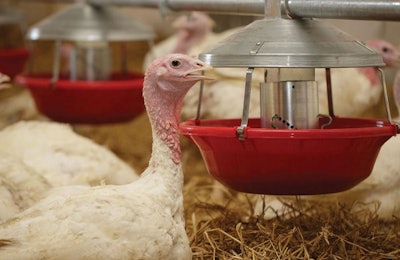
There is no producer that would like to cause any illness with the products he or she manufactures. In addition, companies lose products and end up with negative publicity being generated.
Food safety requires a well-coordinated effort between the farmer, the producer, as well as the consumer, so the safest product is delivered. Therefore, managing the preharvest and postharvest business, up to producing the different chicken products, is paramount.
The real challenge is to create a positive impact on the last section of the business. It is a whole system-wide approach to control safety, in which we can do things, all wrapped up with data analysis.
During the Arm & Hammer breakfast at the IPPE, Lisa W. Picard, senior vice-president, Policy, Trade, and Regulatory Affairs, National Turkey Federation, addressed Salmonella. She said 2018 was a bad year in the U.S., with 906 cases of salmonellosis in humans linked to meat and poultry products from several specific serotypes.
Chicken and turkey products — as well as beef products — all experienced recalls due to Salmonella during 2018, equaling to more than 12 million pounds of protein only in the U.S. But new technologies and better consumer awareness means outbreaks are being caught sooner and reported faster.
The NTF vice president emphasized how important cooking at home is. The consumer has to be part of this process and has to follow the recommendations when preparing, preserving and consuming at home.

Lisa W. Picard, National Turkey Federation, addressed Salmonella concerns at the Arm & Hammer breakfast during IPPE. (Benjamin Ruiz)
Salmonella is also important for animal wellfare. Healthy birds are happy birds. However, it is an expensive challenge. Each step in production should be addressed for Salmonella. It is estimated that 1.5 to 2 percent of total costs account for pathogen reduction.
Therefore, there should be a real focus on biosecurity and on overall plant sanitation. There are new solutions for pre- and postharvest food safety, and Dr. Jackson McReynolds, Arm & Hammer’s director of research and development, talked about the new feed additives that mitigate Salmonella reservoirs in the bird as well as in the poultry house environment, using specifically-developed functional carbohydrates from yeast, as well as Bacillus. This Arm & Hammer product is called Certillus Sal.
The other aspect that McReynolds discussed was phage technology, that has proven to be effective against a broad range of commercially significant organisms, and that is applied at multiple points in the processing plant. This phage technology — commercialized as Arm & Hammer Finalyse SAL — is specific to bacterial hosts, does not alter the taste, texture color or aging process of foods, and it is safe, natural, organic and biodegradable.

















